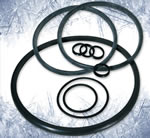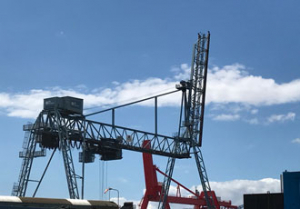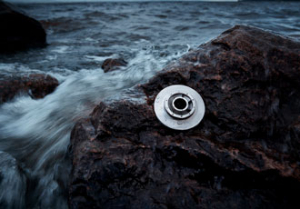Enhanced Seal Performance For Freeze-Drying Applications
30th April 2012
Source:
Dichtomatik Ltd

Freeze-drying processes can involve cycling temperatures in the range of -20°C to +130°C, together with solvents and/or water under medium/high pressures. This combination of aggressive working conditions is conducive to the development of thermal stresses in the seals utilised for the freezer operation. These thermal stresses can also result in associated mechanical stresses leading to premature sealing failures due to cracking and blistering of the seal materials. Dupont Kalrez 6230 perfluoroelastomer (FFKM) parts have been developed to meet such challenging sealing requirements, offering excellent steam cycling resistance up to 260°C.
In freeze-drying applications, the Kalrez 6230 parts can also be used in a tri-clamp seal. This provides an extended performance in the presence of oxidising chemicals over competitive materials, while operating at high pressures and cycling temperatures between -20°C and +121°C.
Freeze-drying (also known as lyophilisation or cryodesiccation) is a dehydration process typically used to preserve perishable materials or make materials lighter or more convenient for transport. The process works by freezing the material and then reducing the surrounding pressure and adding enough heat to allow any frozen water in the material to sublimate directly from the solid phase to the gas phase. In the freezing process, material is cooled below its’ triple point, the lowest temperature during which both solid and liquid phases can coexist to ensure that sublimation rather than melting occurs in the subsequent drying stages. The drying phase is generally made in two steps, which both involve a rise of temperature.
Freeze-drying was actively developed for preserving serums being sent to Europe for the medical treatment of the war wounded during WWII. Without refrigeration, many serum supplies were spoiling before reaching the intended recipients. The commercial technique of freeze-drying enabled serum to be rendered chemically stable and so remain viable without having to be refrigerated. The process was also applied to penicillin and bone, and lyophilisation soon became recognised as an established technique for the preservation of biologicals. Freeze-drying is now used as a preservation processing technique for a wide variety of food and pharmaceutical products, including vaccines, diagnostic kits, viral or bacterial cultures, tissue analysis, and the production of synthetic skins. Other applications involve ceramics for the semiconductor industry, the preparation of river sludge for hydrocarbon analysis, together with the restoration of water damaged documents and even historic wooden artefacts discovered during the course of underwater archaeology.
Kalrez 6230 parts are available in the UK from Dichtomatik Ltd, an authorised UK distributor for Dupont Kalrez products. These products have been developed to meet the unique sealing needs of today’s food and pharmaceutical processes. They are compliant with the United States Food and Drug Administration’s regulations and with the United States Pharmacopeia Class V1 (USP Class V1). They reduce extractables from sealing materials to trace levels, as well as offering a wide range of enhanced performance and endurance capabilities.
Freeze-drying (also known as lyophilisation or cryodesiccation) is a dehydration process typically used to preserve perishable materials or make materials lighter or more convenient for transport. The process works by freezing the material and then reducing the surrounding pressure and adding enough heat to allow any frozen water in the material to sublimate directly from the solid phase to the gas phase. In the freezing process, material is cooled below its’ triple point, the lowest temperature during which both solid and liquid phases can coexist to ensure that sublimation rather than melting occurs in the subsequent drying stages. The drying phase is generally made in two steps, which both involve a rise of temperature.
Freeze-drying was actively developed for preserving serums being sent to Europe for the medical treatment of the war wounded during WWII. Without refrigeration, many serum supplies were spoiling before reaching the intended recipients. The commercial technique of freeze-drying enabled serum to be rendered chemically stable and so remain viable without having to be refrigerated. The process was also applied to penicillin and bone, and lyophilisation soon became recognised as an established technique for the preservation of biologicals. Freeze-drying is now used as a preservation processing technique for a wide variety of food and pharmaceutical products, including vaccines, diagnostic kits, viral or bacterial cultures, tissue analysis, and the production of synthetic skins. Other applications involve ceramics for the semiconductor industry, the preparation of river sludge for hydrocarbon analysis, together with the restoration of water damaged documents and even historic wooden artefacts discovered during the course of underwater archaeology.
Kalrez 6230 parts are available in the UK from Dichtomatik Ltd, an authorised UK distributor for Dupont Kalrez products. These products have been developed to meet the unique sealing needs of today’s food and pharmaceutical processes. They are compliant with the United States Food and Drug Administration’s regulations and with the United States Pharmacopeia Class V1 (USP Class V1). They reduce extractables from sealing materials to trace levels, as well as offering a wide range of enhanced performance and endurance capabilities.
Similar articles
More from Dichtomatik Ltd
- Sanitary seals excel in food and pharmaceutical applications 19th February 2019
- FFKM Seals outperform metal O-rings 23rd August 2016
- No leakage in 10 years with kalrez perfluoroelastomer seals 17th November 2015
- High Performance Seals Handle Rapid Gas Decompression In Extreme Environments 10th February 2015

-(1)ed.jpg)










Write a comment
No comments